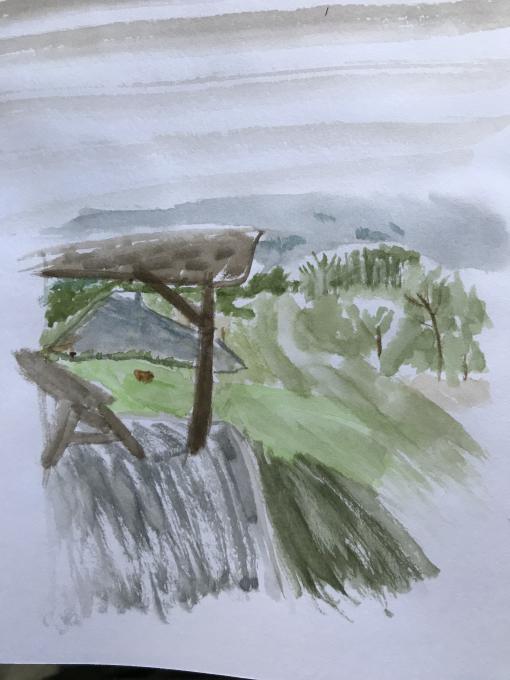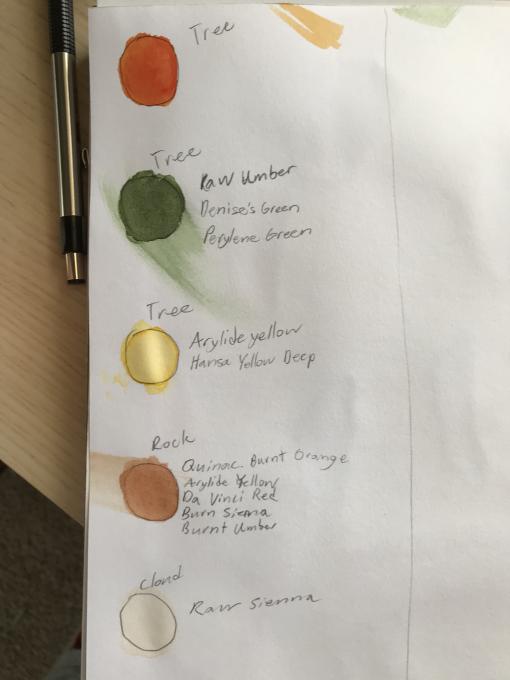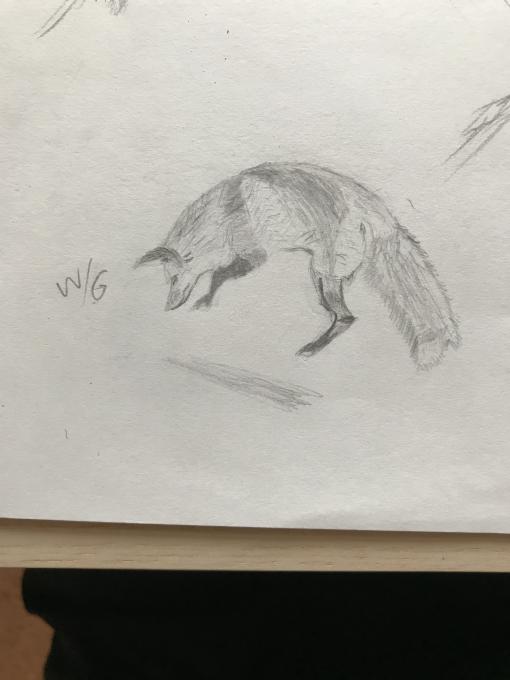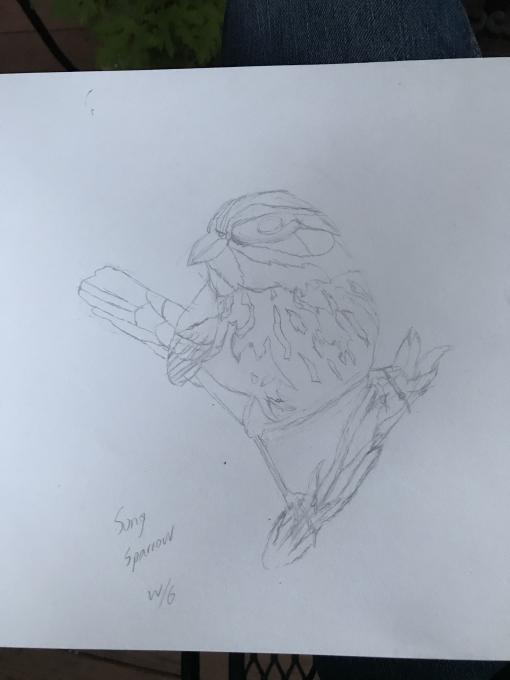William
Forum Replies Created
Viewing 9 posts - 1 through 9 (of 9 total)
-
WilliamParticipantI think my favorite moment of this experience was when we had to draw the fox or one of the other animals from one of the lessons. It turned out much better than I had thought it would. It was a huge confidence booster for me.in reply to: Tips to Keep You Going #809115
-
WilliamParticipantI did this from a photo since I was painting a 5am before the sun came out, it’s not super accurate and I ran out of time for more detail.

 I did the left half of this scene. in reply to: Filling Your Sketches with Color #784146
I did the left half of this scene. in reply to: Filling Your Sketches with Color #784146 -
WilliamParticipantI’m still getting used to water color in general: like not using too much water etc... However, this lesson was very cool. I experimented with all three and attempted to use them in a picture. I found that the techniques fit in exactly how Liz said they would. Wet on dry for detail, wet on wet for large spaces, and dry brush for rough surfaces. The proportions are way off, but I was not really focusing on them for this exercise.

 in reply to: Getting Comfortable with Watercolor #732204
in reply to: Getting Comfortable with Watercolor #732204 -
WilliamParticipantHi Sandy, this is absolutely amazing! Are you able to share any tips on how you did it?in reply to: Getting Comfortable with Watercolor #732156
-
WilliamParticipantWoah! That’s amazing!in reply to: Getting Comfortable with Watercolor #731885
-
WilliamParticipantThis was my first time with water colors. I found that I really like it, although it does take some getting used to. It’s hard to control them on the mixing palette, the paint wants to keep beading up. I have been trying to add some extra water with it and that seems to be helping. Mixing colors is definitely fun! Liz is right, it’s almost like solving a puzzle. I did run into a few difficulties though. The paint set I have is an earth friendly one that does not contain gray, black, or white. So, I have to try to work around that. Also, I have found that when on paper, some of the colors change in brightness, does anyone have any tips to anticipate that? (for the mountain photo)
 in reply to: Capturing Nature’s Color Palettes #730957
in reply to: Capturing Nature’s Color Palettes #730957 -
WilliamParticipantI think drawing negative shapes is by far the most helpful skill for this exercise in my opinion. What was more difficult for me was measuring proportions.

 in reply to: Giving Your Drawings Depth #729005
in reply to: Giving Your Drawings Depth #729005 -
WilliamParticipantDrawing upside-down was much easier for me than if I tried to draw it right side up. It was very hard not to view the subject as it was but it was very helpful to draw it piece by piece and line by line.
 in reply to: Drawing What You See – Upside Down Drawing #728025
in reply to: Drawing What You See – Upside Down Drawing #728025 -
WilliamParticipant1) I felt a little apprehensive about it at first, but I loosened up after a little bit. Actually, it didn't turn out as bad as I thought. What came easily was some of the basic shapes, especially the curve of the branch the warbler is sitting on. What was more difficult was the thicker branch toward the bottom of the picture, as well as the bird's stance and trying to make it look accurate. 2) If I weren't asked to draw it, I wouldn't have noticed the bites and marks on of the leaves as well as the way the bird's legs are positioned on the branch. I think this would make a difference when nature journaling since you would loose some valuable detail in your drawings.in reply to: Jump Right in! #695334
Viewing 9 posts - 1 through 9 (of 9 total)

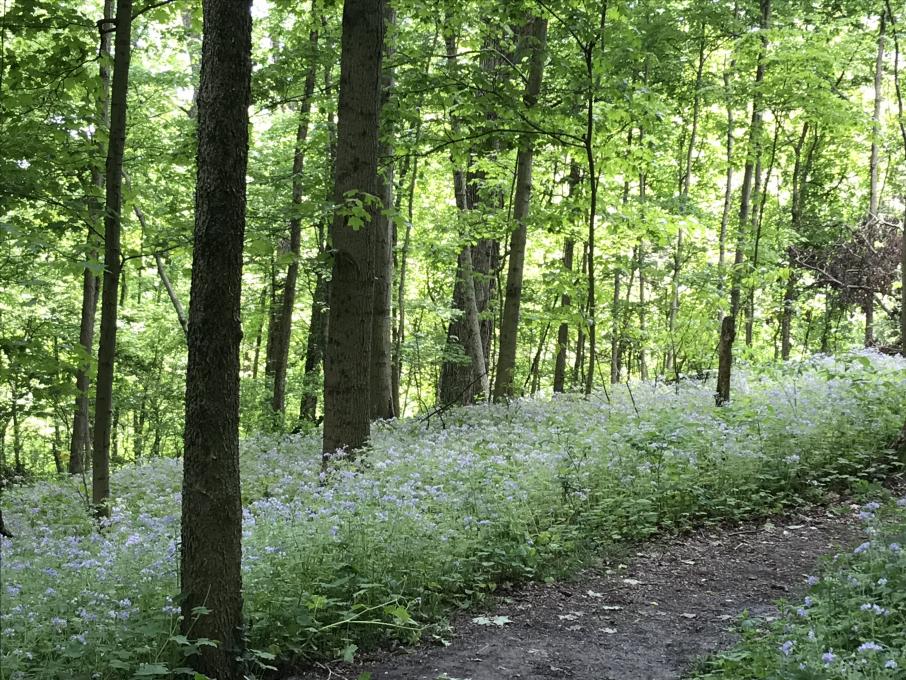 I did the left half of this scene.
I did the left half of this scene. 